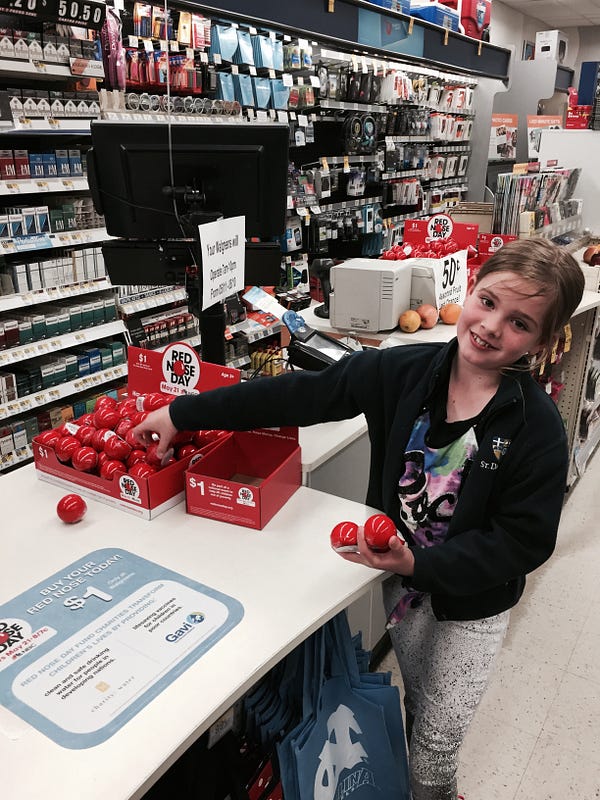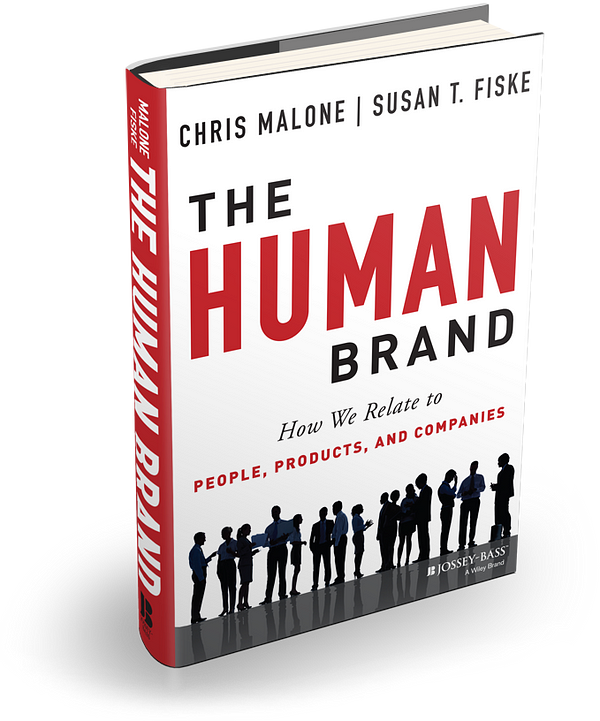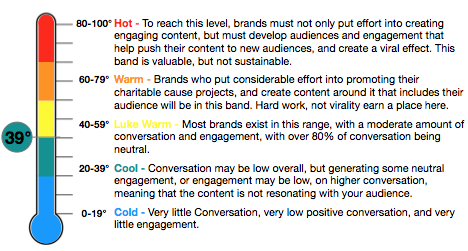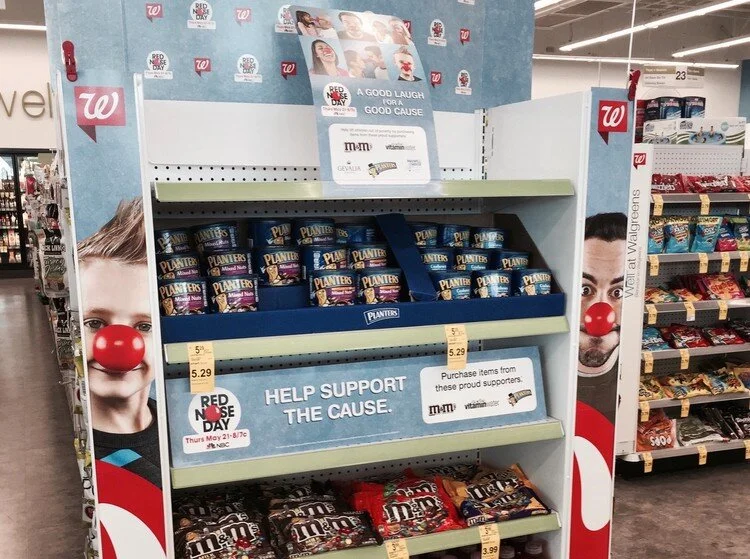How Good Is Cause Related Brand Marketing? ~via @Katadhin
I’m checking out at my local grocery store and as I swipe my card to pay for my purchases, the cashier asks me if I would you like to donate to (insert a charity here). I’m now in the spot of either donating to a cause I don’t know about or have a passionate connection to or looking like a terrible human being. No, I’m not giving a dollar to orphans, I don’t like orphans… Really? This is what passes for acceptable “Good Marketing” today? Shaking customers down for donations in the name of doing good? Of course, this is made even more impersonal by the rise of digital transactions, the point of sale system can do the asking and make it even easier for me to feel disconnected from whatever cause pops up on the screen.

My Daughter Actively Participating in Walgreen’s Red Nose Day Campaign
Imagine what could be if there was more alignment between the cause, the brand and the consumer. It’s likely that all parties could benefit greatly through understanding the true ROI of Good Marketing efforts. The consumer could have warmer feelings about the connection between the brand and the cause resulting in greater brand warmth and loyalty. The brand’s investment in Good Marketing would be more efficient creating more resources to do more good. And finally, the cause itself could be more tightly connected to the consumer though greater word of mouth expanding the overall reach and impact through a positive network effect. In other words, by creating shared value instead of an opportunistic shakedown, everyone wins! Take Walgreens Red Nose Day campaign for instance. By selling Red Noses to shoppers, integrating suppliers and hosting media events with supported causes,Walgreens is driving shared value among all parties.
90% of consumers report they would switch to a cause branded product along with 97% of business executives believe cause marketing is a business strategy. However, actions speak louder than words as only 37% of consumers report purchasing a cause related product in the last year and just 66% of business engaged in Good Marketing. Mush of the disconnect lies in the fact some 70% of consumers find Good Marketing communications confusing. At best, most brand cause related have little to no impact on overall impact as consumers don’t have a strong association with what, why or how the efforts are beneficial. At their worst, Good Marketing efforts have a negative impact on brand warmth as efforts are seen as self-promotional for the connected brand. This year, over $2.0 billion will be given to causes in the US via corporate Good Marketing programs, roughly 1% of total marketing budgets. Imagine what could be if the values of all parties were aligned at the efficiency of these efforts was increased dramatically.

A productive first step is to measure the connection between Good Related marketing and brand warmth. At GoodX, we recently created the GoodX Labs and the Marketing Brand Warmth Index to help brands and retailers better understand the linkages between cause marketing efforts and overall impact on brand warmth. The genesis of brand warmth was popularized by Chris Malone, author of The Human Brand. Chris’s methods and insights have become the basis of our efforts for helping to better understand the cause/brand relationship.
Brand warmth scores combine over 40 factors weighted on a logarithmic scale ranging from 0 to 100. Key measurements include :
Brand Linkage — How closely aligned is a cause linked to brand?
Advocacy Rate — What’s the overall level of consumer support for the Cause/Brand relationship
Applause Rate — Do consumers share and connect with each other about the Brand/Cause
Velocity — How much conversational volume exists?
Sentiment — What’s the composition of consumer sentiment?

We’ve weighted these factors in tests of over 30 brands and their respective cause marketing relationships. Our findings were very surprising. Perhaps the most common theme was that of apathy. Most brands we studied were neither positively or negatively correlated but rather mostly neutral. In the majority of cases, there was little awareness and connection between brands and selected causes, people just weren’t aware of the connection. Even among consumers that were aware, linkages to overall brand mission and understanding of cause interactions were weak at best.
The good news is that cause related marketing is important to consumers, brands and the causes they support, perhaps more than ever. Younger consumers have an even higher expectation of brands with regards to doing good. Not only do they want the brands they use to help worthy causes but they want to actively involved in co-support of causes they care about. The disconnect between that support and action can be bridged. Building stronger brand/cause linkages is why we exist at GoodX. By identifying the key drivers of cause related brand warmth and developing Good Exchanges that benefit all parties by building true shared value and increasing awareness, engagement and connection between consumers, causes and brands.



